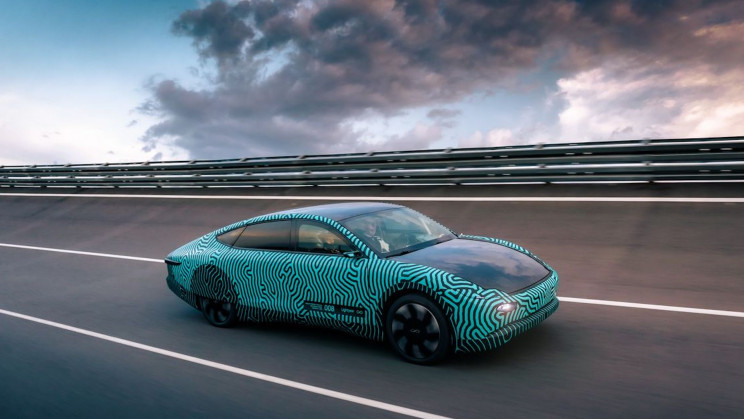Solar-powered EV maker Lightyear recently shared an update on the development of its Lightyear One solar electric vehicle (SEV). The Dutch company announced that it has successfully conducted 20 durability test runs on the Lightyear One.
Their aim is to develop a car that can go months without needing to be plugged in, massively boosting the sustainability of the vehicle and the freedom of its owner.
In an interview via email, Lightyear CEO Lex Hoefsloot told us, “already with our first model, in the Netherlands, during the summer you can drive for months without charging when you use the car for your daily commute.”
‘We need to focus more on the transition to solar cars’
The numbers on Lightyear’s website suggest that we aren’t as far as some might think from seeing long-range SEVs. The company claims its first model consumes only 83 Wh/km — three times less than any other EV on the market today. Using the solar panels on its roof, it can currently charge at a rate of 12 km per hour. For now, Lightyear says this is enough to allow many drivers to perform their daily commute only on solar power for long periods — given that the average commute time in Europe is roughly 30 minutes, according to the European Commission.
Solar-powered car technology is, of course, only in its infancy, meaning this will improve in the coming years. As Hoefsloot explains, the global drive to go sustainable, amid the IPCC’s latest report on climate change, means people are taking SEVs more seriously than ever before.

“There are already various countries in Europe that want to prohibit selling ICE cars by 2030,” Hoefsloot explained. “This is great news, of course, but we do believe that we need to focus more on the transition to solar cars. Designing even more efficient solar panels would, for example, would help significantly in this transition.”
And Lightyear isn’t the only company working on SEVs. “There are various startups, including Lightyear, that are focusing on designing efficient solar cars, and the more traditional car manufacturers are also picking up on this,” Hoefsloot said. Other firms include German startup Sono Motors, which is developing a vehicle with 248 solar cells integrated into its body. Traditional automakers such as Hyundai are also developing cars with solar roof options, with claims that solar can recharge up to 60 percent of the vehicle’s capacity.
Lightyear aims to develop a car that only needs to be plugged in once or twice per year
One of the biggest hurdles when it comes to SEVs going commercial at a mass scale is the fact that solar panels currently operate with an efficiency of around 20 to 35 percent, meaning more panels need to be added, adding to the weight and cost of the vehicle.
We asked Hoefsloot if he believes solar panels will primarily be adopted as a supplement for battery-charged vehicles and he said, “we believe that battery charging will supplement our solar roof. Solar power offers independence. You can just park your car and it will charge. Solar cells have become increasingly cheap and they just provide you clean, free, and hassle-free energy.”
“Our goal,” Hoefsloot said “is to deliver a car that in 15 years’ time will make sure you only need to charge once or twice a year, for every average driver in Europe.”
In order to reach that goal, Lightyear has recently hit two key milestones on the road to producing its first commercial vehicle. In July, Lightyear performed track tests that demonstrated the Lightyear One prototype could drive 441 miles (709 km) on a single charge. The company aims to get the most amount of range possible out of a relatively small battery, meaning the battery and the solar panels are not prohibitively heavy.

More recently, on October 18, the firm conducted roughly a week-long session of durability tests, to ensure the safety of the Lightyear One. For these tests (shown in the video above), the vehicle was driven over rough terrain and roads full of potholes to show that it can withstand real-world conditions.
We might still be some way off seeing long-range SEVs hit the roads. However, with countries like Canada announcing bans on internal combustion engine cars by 2035, the freedom afforded by solar may just add a much-needed extra incentive to EV buyers in the long run.



Comments are closed